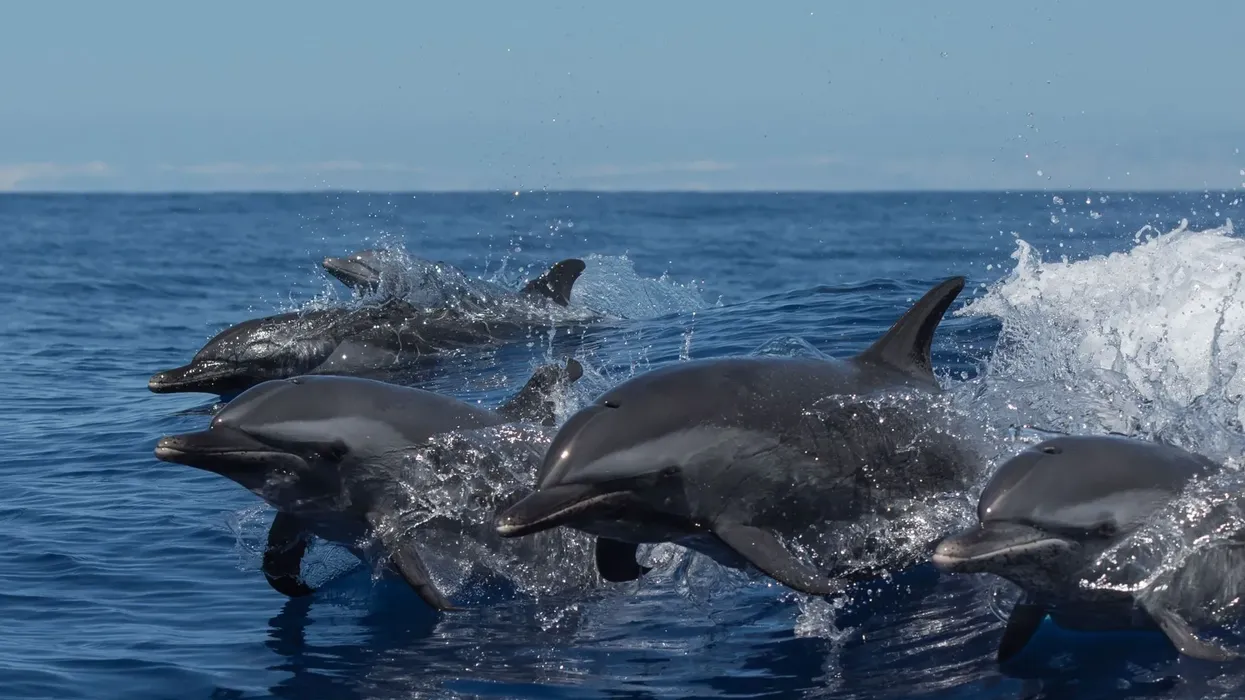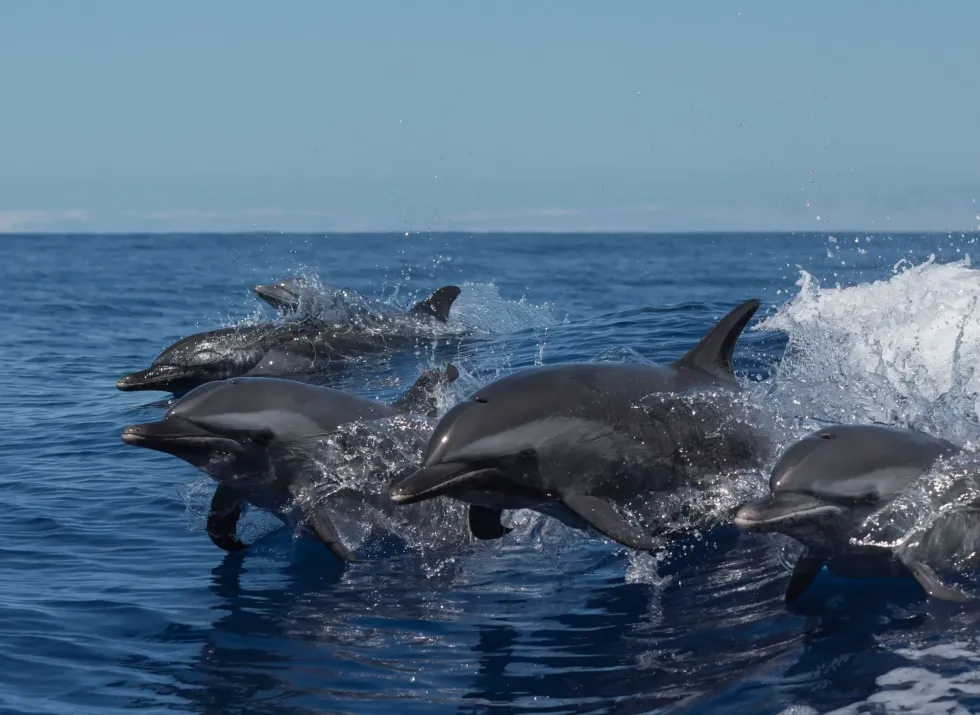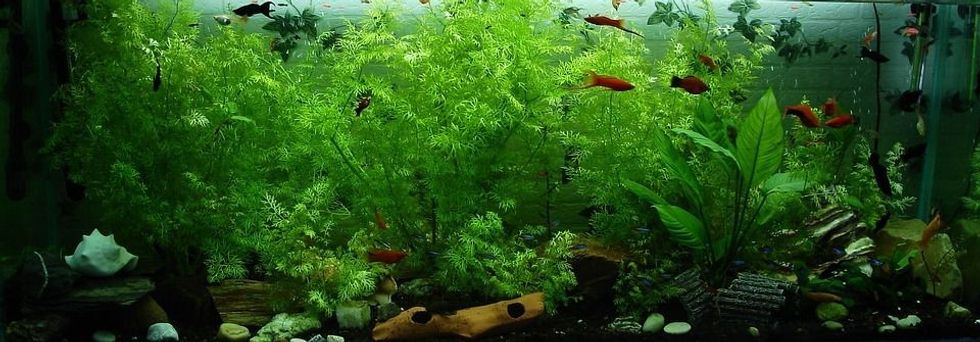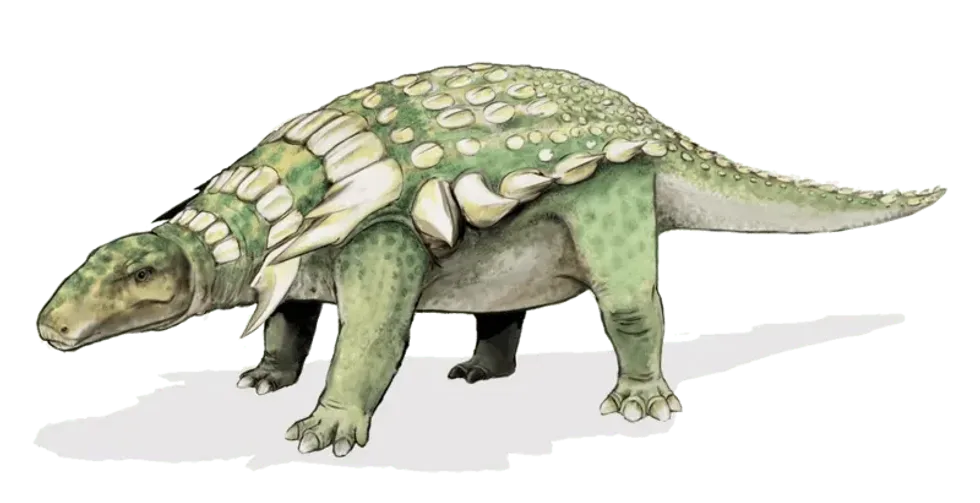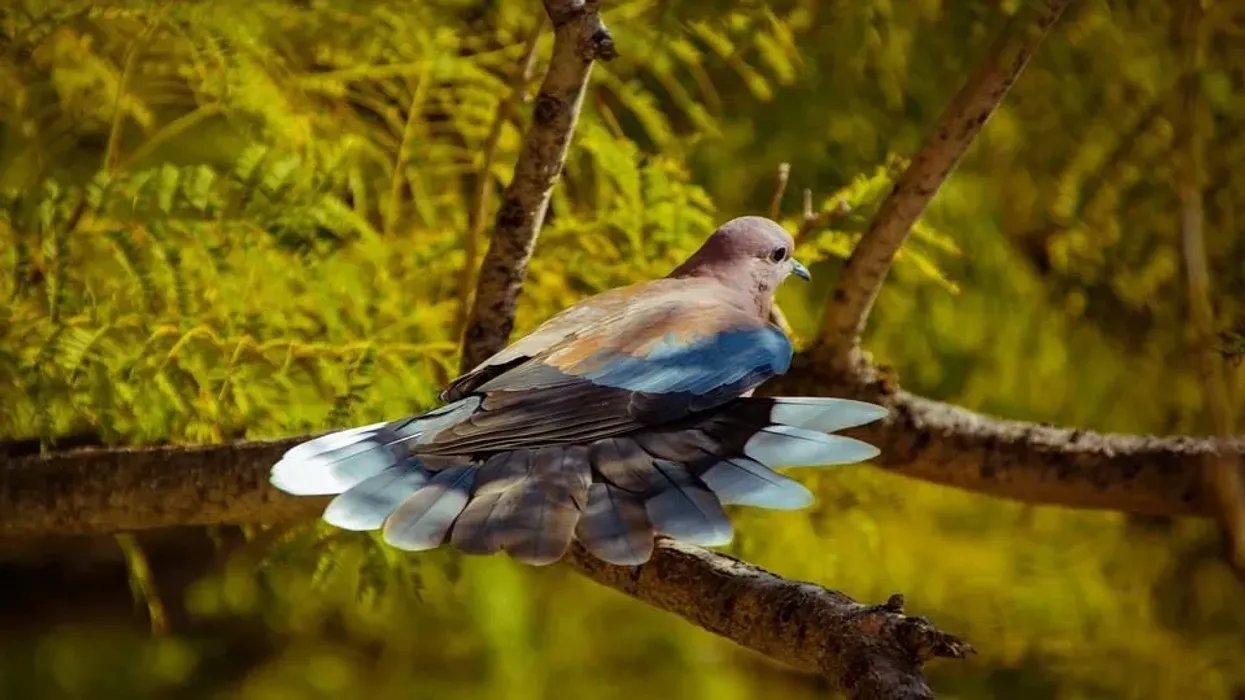As evident from the name, the pantropical spotted dolphin is a dolphin species resident in the tropical and subtropical seas and oceans around the world. Particularly found in the waters between 40 degrees North and 40 degrees South, these marine mammals have an unmistakable slender body, a long beak separated from the forehead, and spots.
The darker upper surface has light spots, while the lower surface is paler and marked with dark spots.
The spots are visible only in adult dolphins. The newborn dolphins are unspotted, the spots beginning to appear at the juvenile stage.
Pantropical spotted dolphins are one of the most abundant dolphin species in the Pacific, Atlantic, and Indian Oceans, with the eastern Pacific Ocean, supposedly housing the largest dolphin population. Moreover, these marine mammals are thought to be the most common cetaceans in the Gulf of Mexico.
The species has been further classified into three subspecies with populations in the eastern Pacific Ocean, the coasts of Mexico through to Peru, and around the Hawaiian Islands.
Pantropical spotted dolphins feed on small fish and squid near the ocean surface. Most members of this marine mammal species reside in offshore locations where the deeper water temperatures remain more or less constant.
Unfortunately, the tuna purse-seine fishery has been one of the primary causes behind the large-scale depletion of these magnificent marine mammals from the eastern tropical Pacific Ocean. In fact, the Marine Mammal Protection Act (MMPA) considers the northeastern offshore population in the eastern tropical Pacific Ocean to have entirely depleted.
There's more to this amazing spotted dolphin species. Read on to find out! For more relatable content, check out these Irrawaddy dolphin facts and black dolphin facts for kids.
Pantropical Spotted Dolphin Interesting Facts
What type of animal is a pantropical spotted dolphin?
The pantropical spotted dolphin is a cetacean of the dolphin family Delphinidae.
What class of animal does a pantropical spotted dolphin belong to?
The pantropical spotted dolphin belongs to the class of Mammalia.
How many pantropical spotted dolphins are there in the world?
The population size of the pantropical spotted dolphins around the world is estimated to be over 3 million, with most members of the species residing in the eastern Pacific Ocean.
Where does a pantropical spotted dolphin live?
Populations of the pantropical spotted dolphin are abundant in the Pacific, Atlantic, and Indian Oceans. Most members of the species live offshore, where the temperatures of the deep waters remain sufficiently constant.
For the same reason, the most number of these pantropical spotted dolphins can be found between the Equator and the Galapagos Islands. In addition, the species undertake seasonal migrations to the coast of Japan.
The northeastern offshore spotted dolphin stock that has been depleted by the tuna purse-seine fishery inhabits the far seas in the eastern tropical Pacific Ocean. On the other hand, the coastal pantropical spotted dolphins reside within 100 mi (161 km) of the coast, and the Hawaiian populations occur around the Hawaiian Islands.
Hawaiian populations generally stay close to the islands but can travel significant distances offshore.
Pantropical spotted dolphins spend a large part of their day in shallow waters of depth between 300-1,000 ft (91.4-304.8 m). At night, the dolphins dive into deeper waters to look for prey.
What is a pantropical spotted dolphin's habitat?
Pantropical spotted dolphins reside in the subtropical and tropical areas of seas and oceans. While most of these pantropical dolphins reside offshore, the species is also found living inshore.
Who do pantropical spotted dolphins live with?
Pantropical spotted dolphins are gregarious animals and live in groups that range from hundreds to thousands of individuals. Groups of inshore dolphins are usually smaller than the offshore ones.
Pantropical spotted dolphins often school with other species of dolphins, such as spinner dolphins, short-finned pilot whales, and rough-toothed dolphins.
In the eastern tropical Pacific Ocean, the species has also been found swimming with the yellowfin tuna fish, one of the main reasons why the dolphins come in the way of tuna fishery and get entangled in nets.
Surprisingly, in pantropical spotted dolphins' range outside the eastern Pacific Ocean, these animals do not associate with tuna fish and are not threatened by tuna fishing operations.
How long does a pantropical spotted dolphin live?
Pantropical spotted dolphins have a lifespan of about 46 years.
How do they reproduce?
There is no particular time of the year when pantropical spotted dolphins mate or give birth. Hence, both take place all year round.
The females of this marine species reach sexual maturity at about 11 years of age. The males usually take a bit longer to reach sexual maturity. Female pantropical spotted dolphins have a gestation period between 11-12 months, resulting in the birth of a single offspring.
The lactation period is pretty long, lasting between one to two years, and is almost thrice as long as those of most other species of large whales. Mother pantropical spotted dolphins are quite caring towards their young and feed near the water surface so that they can stay near their babies.
What is their conservation status?
As per the International Union for Conservation of Nature (IUCN) Red List of Threatened Species, pantropical spotted dolphins are a species of Least Concern. However, they are protected throughout their range under the Marine Mammals Protection Act (MMPA) and feature in Appendix II of CITES (Convention on International Trade in Endangered Species of Wild Fauna and Flora).
Pantropical Spotted Dolphin Fun Facts
What does a pantropical spotted dolphin look like?

Pantropical spotted dolphins have relatively small bodies compared to other species of dolphins. The animals have a long and slender snout with a bright white tip.
Like most other dolphins, these animals, too, have a swollen forehead known as a melon. As evident from the species' name, the pantropical spotted dolphins have spots on the dorsal (upper) and ventral (lower) sides of the body.
The dorsal surface is a dark shade of gray and is dotted with light spots. In contrast, the central surface is paler and covered in dark spots.
However, like the Atlantic spotted dolphins, the pantropical spotted dolphins do not have the spots since birth and accumulate them through the course of life. As they age, the dolphins become almost entirely covered in spots.
The dark coloration on the dorsal side of the body stretches from the head up to a point between the tail flukes and the dorsal fin. Apart from dorsal fin and tail flukes, the dolphins have pectoral fins on their sides.
Besides, the upper and lower jaws are adorned with 29-37 small, rounded teeth. The males usually have a larger body than females. Likewise, the size of inshore spotted dolphins is typically larger than the offshore animals.
How cute are they?
Pantropical spotted dolphins look pretty cute due to their long snout.
How do they communicate?
The various vocalizations of pantropical spotted dolphins include buzzes, clicks, and whistles. The whistles are usually at the upper range of human hearing with frequencies between 10-20 kHz and last for a duration of about 0.7-0.9 seconds. Pantropical spotted dolphins locate food by perceiving the reflected sound from the prey, a phenomenon known as echolocation.
How big is a pantropical spotted dolphin?
Pantropical spotted dolphins range in size between 6-7 ft (1.8-2.1 m). They are about the same size as the spinner dolphin. The spinner dolphin also belongs to the genus Stenella and is known for its acrobatic displays.
How fast can a pantropical spotted dolphin swim?
Pantropical spotted dolphins are exceptionally fast and can swim at speeds of 13.7-17.4 mph (22-28 kph). Moreover, their acrobatic capabilities let them leap to great heights above the water.
How much does a pantropical spotted dolphin weigh?
On average, an adult pantropical spotted dolphin weighs about 264.5 lb (120 kg).
What are the male and female names of the species?
A male dolphin is called a bull and a female is called a cow.
What would you call a baby pantropical spotted dolphin?
Like other dolphin offspring, a baby pantropical spotted dolphin is called a calf.
What do they eat?
Pantropical spotted dolphins are carnivores and feed on small fish and squid.
Are they dangerous?
Pantropical spotted dolphins are not known to be dangerous. Instead, they are hunted down by humans and frequently fall prey to tuna fishing nets.
Would they make a good pet?
Pantropical spotted dolphins are wild animals suited to specific marine habitats. Hence, they are not at all suitable for keeping as pets. Besides, the species is protected under the Marine Mammals Protection Act (MMPA), and it is illegal to own one.
Did you know...
The pantropical spotted dolphins were first described in 1846 by John Gray. Initially, the Atlantic spotted dolphins native to the warm, tropical Atlantic waters were considered the same species as the pantropical spotted dolphins. Atlantic white-sided dolphin, bottlenose dolphin, and rough-toothed dolphin are a few of the kinds of dolphins found in the Atlantic Ocean.
In terms of abundance, the pantropical spotted dolphin is only second to the common bottlenose dolphin.
The largest population density of pantropical spotted dolphins is found in regions of shallow waters where the temperatures usually exceed 77 F (25 C). They are also common in areas marked by a high-temperature gradient.
The pantropical spotted dolphin appears to move offshore in the spring and inshore during the fall and winter. However, their specific migratory patterns are not known clearly.
Is the spotted dolphin endangered?
Even though the IUCN does not categorize the pantropical spotted dolphin as Endangered, its life in the oceans faces constant threats in the form of entanglement in fishing nets, hunting, and illegal feeding and harassment.
One of the main threats to the northeastern offshore stock of pantropical spotted dolphins in the eastern Pacific Ocean is entanglement in commercial tuna fishing gear. In these areas, some tuna species tend to gather beneath groups of the pantropical spotted dolphins.
This leads to tuna fishermen targeting the dolphin groups to catch the tuna gathered below. Such fishing practices lead to a decrease in the population size of the dolphins since they end up getting caught in the fishing nets.
As well as this, pantropical spotted dolphins are extensively hunted for food in the Philippines, Indonesia, and parts of the Pacific. Populations around the Hawaiian Islands frequently come into contact with humans, which leads to harassment and illegal feeding of the dolphins.
What is a group of dolphins called?
A group of dolphins is called a pod.
Here at Kidadl, we have carefully created lots of interesting family-friendly animal facts for everyone to discover! Learn more about some other mammals from our interesting English toy spaniel facts and Auggie dog fun facts pages.
You can even occupy yourself at home by coloring in one of our free printable dolphin coloring pages.
Second image by IIP Photo Archive.

